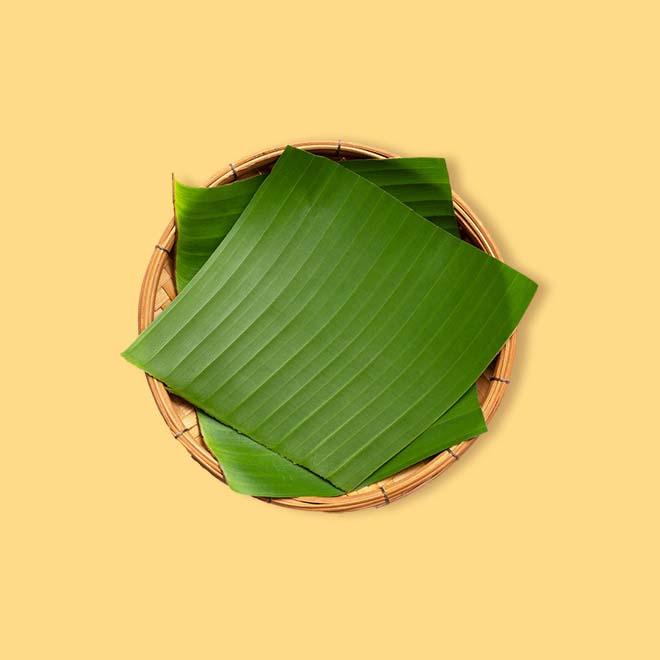Banana Leaf




Banana leaves are the large, broad leaves of the banana plant, not the fruit itself. They're incredibly versatile and have been used for centuries in various cultures for purposes ranging from food service and cooking to religious ceremonies and decorative crafting.
Traditionally used in South and Southeast Asia, banana leaves offer a natural, biodegradable alternative to plates and bowls. Ideal for steaming or grilling, banana leaves act as natural envelopes, holding the food's moisture and flavor while cooking. They're perfect for dishes like dumplings, tamales, and banana leaf parcels.
In Hinduism and Buddhism, banana leaves symbolize purity and renewal. They're used for offerings, religious meals, and decoration. In some regions, banana leaves are used as natural packaging for food and other goods.
When buying banana leaves bear in mind that fresh leaves offer a greener flavor and flexibility, while dried leaves are more durable and easier to store. They can be often found in Asian grocery stores as well as online retailers. When buying fresh leaves, look for a vibrant green color, smooth texture, and minimal brown spots or tears. Dried leaves should be dry and brittle, not moldy or damp.
Store fresh banana leaves wrapped in a damp paper towel and keep refrigerated for up to 1 week. Dried leaves can be stored in a dark and cool place for up to several months if the container has been sealed properly.
Ditch plastic wrap and aluminum foil. Wrap sandwiches, snacks, or leftovers in banana leaves for a sustainable and flavorful alternative. The leaves impart a subtle grassy note, keeping your food fresh and plastic-free.
Banana leaves create a natural, humid environment perfect for fermenting vegetables. Use them to cover kimchi jars, sauerkraut crocks, or other fermentation projects, offering a breathable and aromatic alternative to plastic lids.
While small, cooking with banana leaves can leach some minerals like potassium and magnesium from the leaves into the food. This adds a very slight nutritional boost to your meal.
From steaming baskets in China to food wrappers in Vietnam, banana leaves have been a cornerstone of cooking traditions worldwide. In Thailand, intricate woven baskets and containers crafted from dried leaves showcase meticulous craftsmanship. In India, they're used to create beautiful floral offerings called 'canang', adding a touch of nature to religious ceremonies.
Placed at the bottom of a steamer, banana leaves prevent food from sticking and add a delicate aroma.
Before using, soak fresh leaves in warm water for about 15 minutes to make them supple and pliable. If using dried leaves, soak them in warm water for 30 minutes or until softened before shaping.
Studies suggest banana leaves contain phenolic compounds with antimicrobial properties that can inhibit the growth of certain bacteria.
While the impact on the final dish may be small, research indicates banana leaves contain some antioxidant compounds like polyphenols. These can contribute to overall health by fighting free radicals and potentially reducing the risk of chronic diseases.
Corrections or improvements? Email us at
content@sidechef.com